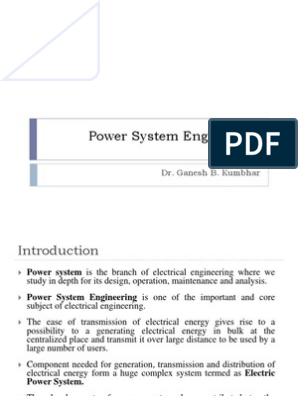0% found this document useful (0 votes)
9 views9 pagesModule I Power System I
The document provides an overview of the evolution and current state of power systems, highlighting the importance of electrical energy in modern civilization. It details the historical development of power generation, the current installed capacity in India, and the structure of the power supply network. Additionally, it discusses the significance of renewable energy sources and the role of the private sector in energy management.
Uploaded by
sushantanayak2003Copyright
© © All Rights Reserved
We take content rights seriously. If you suspect this is your content, claim it here.
Available Formats
Download as PDF, TXT or read online on Scribd
0% found this document useful (0 votes)
9 views9 pagesModule I Power System I
The document provides an overview of the evolution and current state of power systems, highlighting the importance of electrical energy in modern civilization. It details the historical development of power generation, the current installed capacity in India, and the structure of the power supply network. Additionally, it discusses the significance of renewable energy sources and the role of the private sector in energy management.
Uploaded by
sushantanayak2003Copyright
© © All Rights Reserved
We take content rights seriously. If you suspect this is your content, claim it here.
Available Formats
Download as PDF, TXT or read online on Scribd
/ 9






















































































